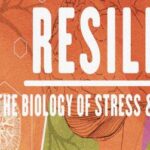Marijuana
Brief Description
 Marijuana is a dry, shredded green and brown mix of leaves, flowers, stems, and seeds from the hemp plant Cannabis sativa. In a more concentrated, resinous form, it is called hashish, and as a sticky black liquid, hash oil. The main psychoactive (mind-altering) chemical in marijuana is delta-9-tetrahydrocannabinol, or THC.
Marijuana is a dry, shredded green and brown mix of leaves, flowers, stems, and seeds from the hemp plant Cannabis sativa. In a more concentrated, resinous form, it is called hashish, and as a sticky black liquid, hash oil. The main psychoactive (mind-altering) chemical in marijuana is delta-9-tetrahydrocannabinol, or THC.
Marijuana is the most common illicit drug used in the United States. After a period of decline in the last decade, its use has generally increased among young people since 2007, corresponding to a diminishing perception of the drug’s risks. More teenagers are now current (past-month) smokers of marijuana than of cigarettes, according to annual survey data.
Long-term marijuana users trying to quit report withdrawal symptoms including irritability, sleeplessness, decreased appetite, anxiety, and drug craving, all of which can make it difficult to remain abstinent. Behavioral interventions, including cognitive-behavioral therapy and motivational incentives (i.e., providing vouchers for goods or services to patients who remain abstinent) have proven to be effective in treating marijuana addiction. Although no medications are currently available, recent discoveries about the workings of the endocannabinoid system offer promise for the development of medications to ease withdrawal, block the intoxicating effects of marijuana, and prevent relapse.
Effects
 Research clearly demonstrates that marijuana has the potential to cause problems in daily life or make a person’s existing problems worse. In fact, heavy marijuana users generally report lower life satisfaction, poorer mental and physical health, relationship problems, and less academic and career success compared to their peers who came from similar backgrounds. For example, marijuana use is associated with a higher likelihood of dropping out from school. Several studies also associate workers’ marijuana smoking with increased absences, tardiness, accidents, workers’ compensation claims, and job turnover.
Research clearly demonstrates that marijuana has the potential to cause problems in daily life or make a person’s existing problems worse. In fact, heavy marijuana users generally report lower life satisfaction, poorer mental and physical health, relationship problems, and less academic and career success compared to their peers who came from similar backgrounds. For example, marijuana use is associated with a higher likelihood of dropping out from school. Several studies also associate workers’ marijuana smoking with increased absences, tardiness, accidents, workers’ compensation claims, and job turnover.
Health Concerns
Marijuana use can have a variety of adverse, short- and long-term effects, especially on cardiopulmonary and mental health.
Marijuana raises heart rate by 20-100 percent shortly after smoking; this effect can last up to 3 hours. In one study, it was estimated that marijuana users have a 4.8-fold increase in the risk of heart attack in the first hour after smoking the drug. This may be due to increased heart rate as well as the effects of marijuana on heart rhythms, causing palpitations and arrhythmias. This risk may be greater in older individuals or in those with cardiac vulnerabilities.
Marijuana smoke is an irritant to the lungs, and frequent marijuana smokers can have many of the same respiratory problems experienced by tobacco smokers, such as daily cough and phlegm production, more frequent acute chest illness, and a heightened risk of lung infections. One study found that people who smoke marijuana frequently but do not smoke tobacco have more health problems and miss more days of work than nonsmokers, mainly because of respiratory illnesses.
A number of studies have shown an association between chronic marijuana use and mental illness. High doses of marijuana can produce a temporary psychotic reaction (involving hallucinations and paranoia) in some users, and using marijuana can worsen the course of illness in patients with schizophrenia. A series of large prospective studies also showed a link between marijuana use and later development of psychosis. This relationship was influenced by genetic variables as well as the amount of drug used and the age at which it was first taken—those who start young are at increased risk for later problems.
Associations have also been found between marijuana use and other mental health problems, such as depression, anxiety, suicidal thoughts among adolescents, and personality disturbances, including a lack of motivation to engage in typically rewarding activities. More research is still needed to confirm and better understand these linkages.
Marijuana use during pregnancy is associated with increased risk of neurobehavioral problems in babies. Because THC and other compounds in marijuana mimic the body’s own cannabinoid-like chemicals, marijuana use by pregnant mothers may alter the developing endocannabinoid system in the brain of the fetus. Consequences for the child may include problems with attention, memory, and problem solving.
Finally, marijuana use has been linked in a few recent studies to an increased risk of an aggressive type of testicular cancer in young men, although further research is needed to establish whether there is a direct causal connection.
Accidents While Driving
Because it seriously impairs judgment and motor coordination, marijuana also contributes to accidents while driving. A recent analysis of data from several studies found that marijuana use more than doubles a driver’s risk of being in an accident. Further, the combination of marijuana and alcohol is worse than either substance alone with respect to driving impairment.
Source: NIDA (National Institute on Drug Abuse)











